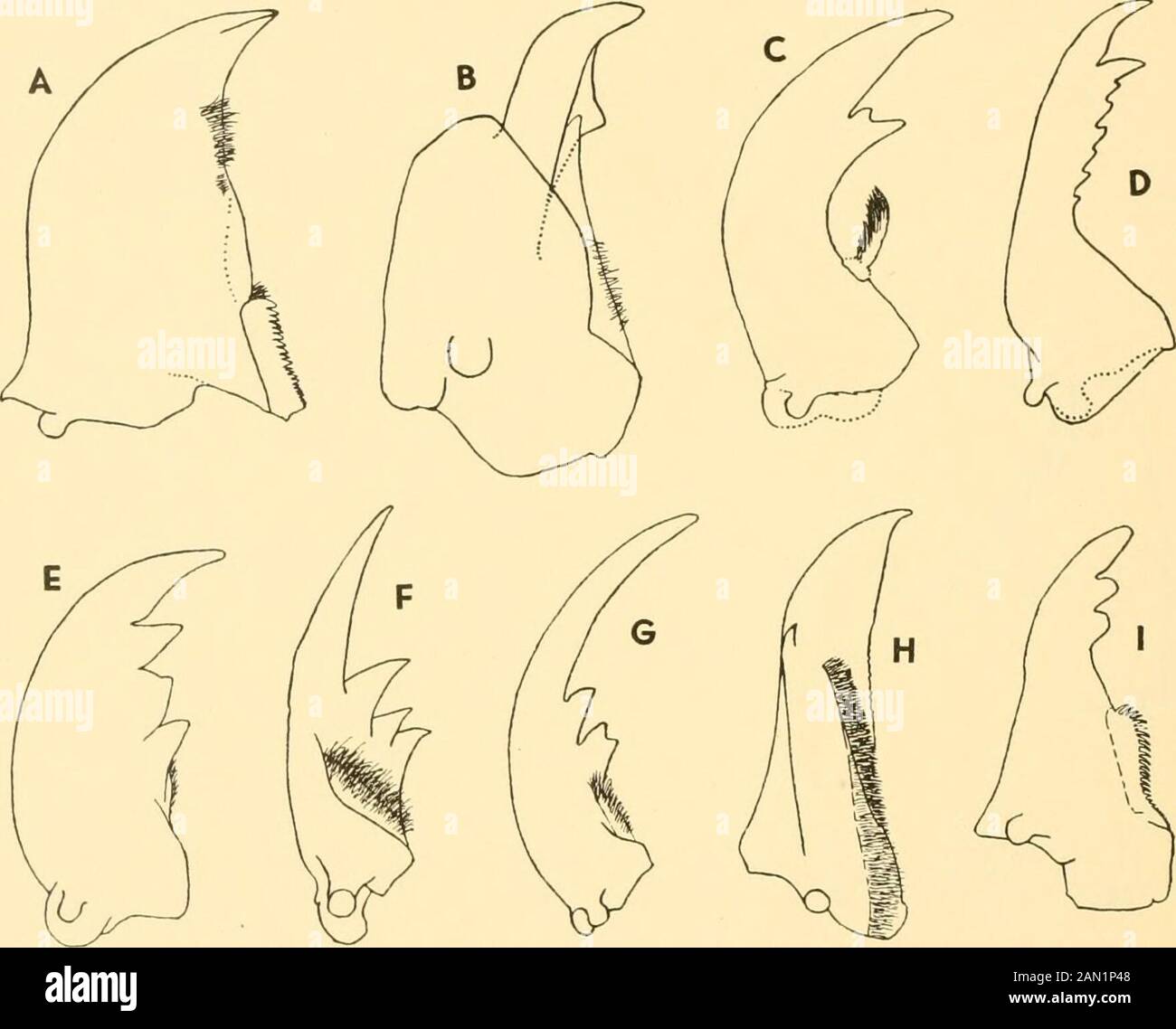Smithsonian miscellaneous collections . tatus Lee. D, Xenodusa sharpi Wasm. E, Lcptochirns mexicamis Er.F, Aplodcrits linearis Lee. G, Oligota csmeraldae Csy. H, Bolitobius cinctns(Grav.). L Pseudopsis obliterata Lee. J, Liparoccphahts brcvipennis Miikl.K, Glenus flohri Shp. L, Astcnns discopiinctatns (.Say). to many teeth may be produced, placed either near the tip or at anypoint along the inner face. One species, Oxyporus (fig. 16 H),has a very small isolated tooth near the outer margin of the mandible 6o SMITHSONIAN MISCELLANEOUS COLLECTIONS VOL. 94 at the middle. The condyles are fairly co

Image details
Contributor:
The Reading Room / Alamy Stock PhotoImage ID:
2AN1P48File size:
7.1 MB (157 KB Compressed download)Releases:
Model - no | Property - noDo I need a release?Dimensions:
1760 x 1419 px | 29.8 x 24 cm | 11.7 x 9.5 inches | 150dpiMore information:
This image is a public domain image, which means either that copyright has expired in the image or the copyright holder has waived their copyright. Alamy charges you a fee for access to the high resolution copy of the image.
This image could have imperfections as it’s either historical or reportage.
Smithsonian miscellaneous collections . tatus Lee. D, Xenodusa sharpi Wasm. E, Lcptochirns mexicamis Er.F, Aplodcrits linearis Lee. G, Oligota csmeraldae Csy. H, Bolitobius cinctns(Grav.). L Pseudopsis obliterata Lee. J, Liparoccphahts brcvipennis Miikl.K, Glenus flohri Shp. L, Astcnns discopiinctatns (.Say). to many teeth may be produced, placed either near the tip or at anypoint along the inner face. One species, Oxyporus (fig. 16 H), has a very small isolated tooth near the outer margin of the mandible 6o SMITHSONIAN MISCELLANEOUS COLLECTIONS VOL. 94 at the middle. The condyles are fairly constant in position. The ven-tral one is a rounded protuberance and is located on the proximalend of the ventral side near the outer angle. In Oxyporus (fig. 16 H)this condyle is situated much nearer the inner edge. The dorsal ar-ticulation is sometimes a definite rounded acetabulum but frequentlyis only a hollow curve along the face of an irregular projection. Theprostheca ofifers considerable variety in form, size, and position. It is. Fig. 16.—Intrafamily variation of the mandibles (continued from fig. 15), A, Pclccomnlium tcstaceum (Mann.). B, Hypocyptus longicornis (Payk.).C, Pacdcrillus pugctcnsis Csy. D, Stcnus scuJptUis Csy. E, Lithocharis ochracea(Grav.). F, .AcyIophonts flavicoUis Sachse. G, Hesperohimn pallipcs (Grav.).H, Oxyporus lateralis Grav. I, BIcdiiis nwiistrafiis Csy. apparently lacking in Micropcplus (fig. 15 C), Astcnus (fig. 15 L), and Stenus (fig. i6 D). In Glenus (fig. 15 K), Paederilhis (fig. 16 C), and Creophilus (fig. 2 F) the prostheca is a definite projecting lobewith numerous minute hairlike processes, while in many other speciesit is apparently represented by a more or less definite row or areaof processes proceeding from the surface of the mandible or a groovethereon, such as in Pelecomalium (fig. 16 A), Proteinus (fig. 15 A), Acylophorus (fig. 16 F), Oxyporus (fig. 16 H), Bolitohhis (fig.15 H), and Xcnodusa (fig. 15 D). NO. 13 STAPH YLINIDAE BLACKW